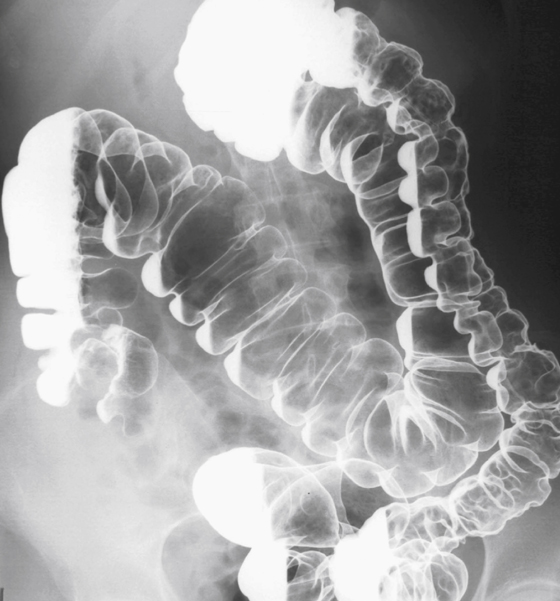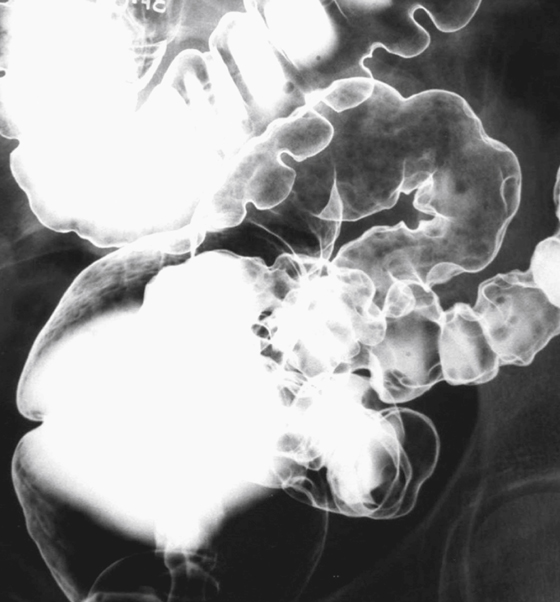CASE 188


History: A 38-year-old woman presents with bloody diarrhea.
1. What should be included in the differential diagnosis of the imaging finding shown in the figures? (Choose all that apply.)
2. What is the most common colon polyp?
3. This patient has a history of foreign travel including “swimming in the Nile.” What diagnostic consideration has the greatest relevance to this history?
4. What is the most common clinical manifestation of schistosomal infection?
ANSWERS
CASE 188
Schistosomiasis of the Colon
1. A, B, and C
2. B
3. A
4. A
References
Fataar S, Bassiony H, Hamed MS, et al: Radiographic spectrum of rectocolonic calcification from schistosomiasis. AJR Am J Roentgenol. 1984;141(5):933-936.
Cross-Reference
Gastrointestinal Imaging: THE REQUISITES, 3rd ed, p 290.
Comment
Polypoid processes limited to the distal colon, as in this case, are usually hyperplastic in nature (see figures). Hyperplastic polyps, although the most common colonic polyp, are mostly small (<5 mm) and difficult to image. The polyps shown in this case are larger with a mostly smooth elevated surface (see figures). Some have tiny collections of barium, indicating ulceration. The patient presented with rectal bleeding. Adenomas, which represent about 10% of all colonic polyps, can bleed. However, a cluster of adenomatous polyps limited to the distal colon would be extremely unusual, even in the various polyposis syndromes.
The patient’s history of foreign travel and “swimming in the Nile” must be considered in the differential diagnosis. Schistosomiasis is endemic in several places in the world and, until more recently with the return of malaria to the world scene, was the most common infectious (parasitic) disease in the world. Even a single exposure to fresh water in these endemic areas can result in infection, such as in this patient. Humans are the host for this parasitic infection; with world travel becoming commonplace, U.S. physicians and particularly radiologists should be aware of the possibility of tropical diseases, especially new outbreaks of malaria in travelers coming home to the United States.
In schistosomiasis, the organisms are S. mansoni and Schistosoma japonicum. In fresh water, the tiny worms penetrate the human skin; seek the vascular system of the host; and migrate to the liver, lungs, bladder, and other organs. Bladder involvement is associated with an increased risk of bladder cancer. When in the host organ, in this case, the lower colon (usually S. mansoni), the worms infest the venules of the colon wall, and eventually mature eggs are deposited in the wall (hence the polyps) and rupture into the lumen (hence the ulceration on the polyps and bleeding).







